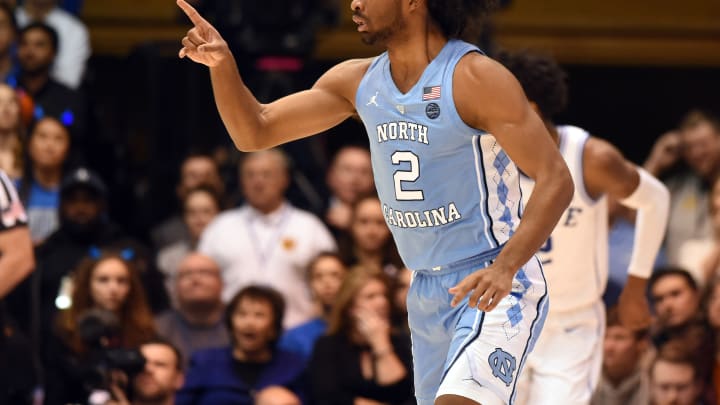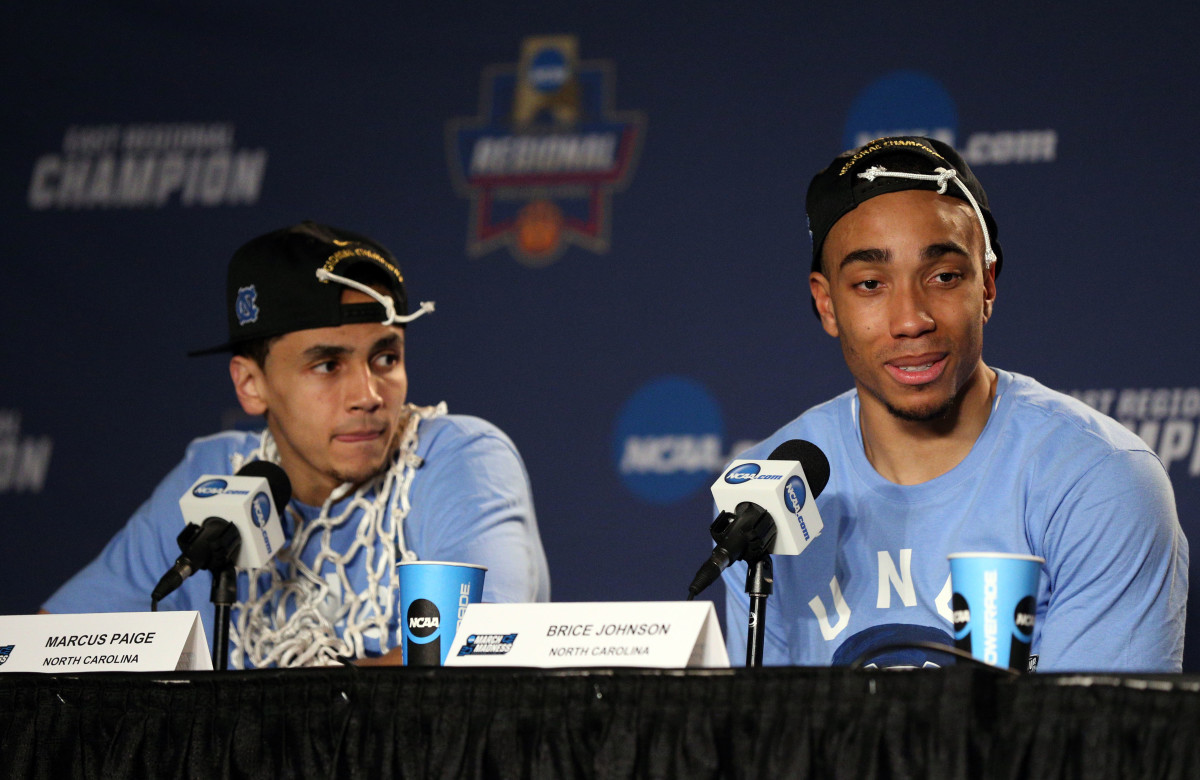Not Your Typical Carolina Basketball All-Decade Team

There are no shortage of all-decade teams out there over the past few weeks, but rather than listing the best players at each position, we wanted to take a different approach and truly build a team with complementary parts, filling out all 13 scholarship spots based on a combination of what they achieved at North Carolina and their skillsets.
For North Carolina, that means separating players by the three position groups that Roy Williams classifies his roster: point guards, wings and post players.
The best team of players from the 2010s:
Point Guard
Starter: Coby White
This one was a tough call because White didn’t have the sustained success of his two backups, but White is a special case.
If Williams could use create-a-player to build the perfect point guard for his offense, White was that point guard. No one — not veterans Raymond Felton or Ty Lawson — have run the Carolina offense as fast as White did last season when the Tar Heels averaged 74.3 possessions.
Not only did White average 16.1 points, but his confidence never wavered, even as he figured out the finer points of being a point guard at Carolina and in the ACC. Over the course of the season, White cut down his turnovers and understood when to attack and when to facilitate.
Reserves: Kendall Marshall, Marcus Paige
The fact that there’s even a possibility these two could come off the bench speaks to how lucky Carolina has been at point guard.
Marshall, who Williams has routinely listed among the smartest players he’s coached, is the perfect fit for a star-studded lineup with the possibility he’d be the most important player on the floor without even taking a shot. Over two seasons, Marshall’s assist rate was absurd 43.7 percent.
As for Paige, he showed a more well-rounded game at the position, capable of either taking over as a scorer, as he did early in his time at Carolina, or settling in as a distributor, as he did to finish things off.

Wings
Starters: Justin Jackson, Theo Pinson
Pinson doesn’t need the ball in his hands to affect the game, which makes him the perfect player to start alongside a backcourt that includes Jackson and White. For one, he could take the pressure off Jackson by guarding the opponent’s better perimeter player.
Jackson, meanwhile, is the poster boy for development among the perimeter players to come through Carolina in the past decade. Over the course of his career, Jackson learned the importance of moving off the ball, and in turn, fine-tuned his shot to the point that defenders couldn’t ignore him when he ran off screens.
Reserves: Harrison Barnes, Joel Berry, Kenny Williams
Barnes might be the most talented pure scorer of the decade, and for that reason, he’s the perfect sixth man to provide instant offense off the bench when White gets a breather. No doubt, Barnes raised his game when it counted, too, dropping 40 points in ACC Tournament win over Clemson before setting a Carolina freshman record with 84 points in the NCAA Tournament.
Berry, who averaged 17.1 points as a senior, brings more than scoring to the table, having earned the “Tough Little Nut” moniker from Williams. Playing off the ball, he’d have a chance to do what he does best as a shooter and slasher, saving energy for the defensive end.
Williams will probably be the most questioned player on this roster, but given the amount of offensive talent on the perimeter, it makes sense to put a player capable of completely selling out defensively on the team. He’s plenty capable of knocking down an open 3-pointer or two, but if Williams saw the court it would be for the sole purpose of locking up the opposing team’s best guard for a few minutes.

Posts
Starters: Brice Johnson, Tyler Zeller
Just as Jackson was a nod to Carolina’s player development on the perimeter, Johnson achieving his potential is a credit to his work, along with the coaching staff pushing him to get there.
An enigma early on, Johnson left Carolina as a first-team All-American and came within one shot of a national title, averaging 17.0 points, 10.4 rebounds and 1.5 blocks while hitting over 61 percent of his field goal attempts.
A two-time All-ACC selection and the ACC Player of the Year as a senior, Zeller didn’t have some of the fanfare of his talented teammates at the turn of the decade, but the rim-running big man was a key to Carolina’s success. His ability to run the floor was a perfect fit for the offense, as he averaged 16.3 points and 9.6 rebounds as a senior.
With White leading the break, these two would have a field day.
Reserves: John Henson, Luke Maye, Kennedy Meeks
Off the bench, Henson would serve as a valuable rim-protector who wouldn’t necessarily need offensive touches to affect the game and serve as a nice complement to Maye, whose offense was much stronger than his ability on the defensive end.
Maye’s versatility makes him an excellent fit for playing with any number of lineup combinations, capable of stepping outside to the perimeter as a four, or in limited cases, playing the five in a small lineup that would run opponents to death.
Meeks, meanwhile, might be the most under-appreciated Carolina player of the decade, as his strength and conditioning work culminated in a huge senior season, averaging 12.5 points and 9.5 rebounds to help key the Tar Heels’ run to the national championship.
If not for his 25 points and 14 rebounds against Oregon in the Final Four, Carolina likely comes up short in Phoenix.
